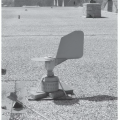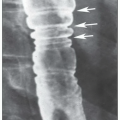Rhinitis is one of the most common medical conditions, with allergic rhinitis affecting approximately 10% to 25% of the population in Western societies and around 30 to 60 million patients annually in the United States. While allergic rhinitis is the most common form of chronic rhinitis, 30% to 50% of patients with rhinitis have nonallergic triggers, and around 44% to 87% have mixed rhinitis (a combination of allergic and nonallergic rhinitis). Not only does rhinitis decrease the quality of life, aggravate comorbid conditions, and require significant direct medical expenditures, it also creates even greater indirect costs to society through loss of work and school days, reduced workplace productivity, and decreased school learning. Rhinitis can contribute to sinusitis and is frequently associated with asthma.
I. BACKGROUND AND PATHOPHYSIOLOGY.
Rhinitis is a nasal disorder characterized by rhinorrhea, nasal congestion, nasal pruritus, or sneezing and can be allergic, nonallergic, or mixed (a combination of allergic and nonallergic). Allergic rhinitis is most common, but about 30% to 50% of people with rhinitis have nonallergic forms.
A. Allergic rhinitis occurs when inhaled allergen particles cause sensitization with the production of allergen-specific immunoglobulin E (IgE). Upon subsequent exposure in sensitized individuals, the allergens are recognized by IgE attached to mast cells triggering their degranulation with the release of preformed mediators like histamine and the production of cysteinyl leukotrienes and prostaglandin D2. These mediators cause acute mucosal edema, mucus secretion, vascular leak, and stimulation of sensory neurons within minutes. A late-phase response also can occur over several hours with the release of chemotactic factors such as IL-5, which results in the influx of inflammatory cells, particularly eosinophils. Although clinical symptoms during the late phase might be clinically similar to those of an immediate reaction, nasal congestion is more prominent.
B. Nonallergic rhinitis is likely caused by a heterogenous group of disorders with a pathogenesis that is incompletely understood, only sometimes involving inflammation.
II. TYPES OF RHINITIS
A. Allergic rhinitis has a predominant demonstrable allergic mechanism as discussed above. It can begin at any age, but typical onset is 9 to 11 years. The most common allergic triggers are pollen, fungi, and indoor allergens such as dust mites, pet dander, and cockroaches.
B. Nonallergic rhinitis syndromes
1. Nonallergic rhinitis without eosinophilia. Also known as idiopathic rhinitis, nonallergic rhinitis without eosinophilia is characterized by chronic rhinorrhea and/or congestion independent of infection or allergies. Vasomotor rhinitis is a term that sometimes is used synonymously with nonallergic rhinitis without eosinophilia but can have a specific connotation that nasal symptoms are provoked in response to nonallergic environmental factors, such as changes in temperature or relative humidity, odors
(e.g., perfumes or cleaning materials), passive tobacco smoke, alcohol, sexual arousal, exercise, and emotional factors. For certain irritant triggers that are relevant to a patient, avoidance can be recommended.
2. Nonallergic rhinitis with eosinophilia. NARES is defined as perennial nasal symptoms, typically nasal congestion but also sneezing, rhinorrhea, nasal pruritus, and commonly anosmia, with findings of eosinophilia on nasal cytology in the absence of identifiable allergen sensitivity. This syndrome is usually found in middle-aged adults, and there is some evidence that NARES be an early stage of nasal polyposis and aspirin sensitivity.
3. Gustatory rhinitis. Rhinorrhea occurring immediately after food ingestion is a cholinergic process called gustatory rhinitis. Hot foods and spicy foods are frequently implicated. Individuals may develop nasal congestion after drinking alcoholic beverages due to the pharmacologic ability of ethanol to contribute to nasal vasodilation. IgE-mediated food allergy as a cause of rhinitis symptoms rarely if ever occurs unless accompanied by symptoms involving other organ systems.
4. Drug-induced rhinitis. Both topical and oral medications can be implicated in drug-induced rhinitis. Topical vasoconstrictors used for longer than 3 to 5 days may induce rebound nasal symptoms upon discontinuation. This rebound nasal congestion along with decreased mucociliary clearance due to loss of ciliated epithelial cells is termed rhinitis medicamentosa. Repetitive use of intranasal methamphetamine and cocaine may also produce rebound congestion and septal perforation and erosion. Oral medications responsible for drug-induced rhinitis include nonsteroidal anti-inflammatory agents, oral contraceptives, and antihypertensive medicines such as beta-blockers and angiotensin-converting enzyme inhibitors.
5. Hormonal rhinitis. Causes may include the use of oral contraceptives or conjugated estrogens, thyroid disease, acromegaly, puberty, menstruation, lactation, and pregnancy. In pregnancy, hormonal-induced vasodilation and increased blood volume can lead to nasal vascular pooling causing pregnancy rhinitis de novo, which is characterized by nasal congestion during pregnancy that typically resolves within 2 weeks of delivery. More commonly observed in pregnancy is the presence of preexisting rhinitis that worsens in about one-third of pregnant women.
6. Atrophic rhinitis. Both primary and secondary atrophic rhinitis have been described. The primary form usually occurs in young to middle-aged adults who live in warm climates of developing countries and is commonly associated with sinusitis. The progressive atrophy of the nasal mucosa and resorption of the underlying bone and turbinates defining this condition are proposed to have an infectious basis. Nasal dryness, ozena, which is the presence of foul-smelling nasal crusts associated with a constant bad smell, and abnormally wide-appearing nasal cavities are commonly noted. Nasal biopsy shows squamous metaplasia, glandular cell atrophy, and loss of pseudostratified epithelium. Diminished airflow resistance from nasal mucosal tissue loss paradoxically causes the sensation of severe nasal congestion. Secondary atrophic rhinitis is normally the direct result of trauma, excessive nasal surgery, irradiation, or other primary nasal or sinus conditions.
7. Occupational rhinitis. Occupational rhinitis causes symptoms that are temporally related to exposure at work and often improve away
from the workplace. This may be triggered by mechanisms that may be IgE mediated (e.g., from laboratory animals, psyllium), immunologic non-IgE mediated (e.g., polyisocyanates in paints), or irritant induced (e.g., chemicals, grain dust). For patients with preexisting nonoccupational rhinitis, exposure to workplace irritants can aggravate symptoms. Allergic occupational rhinitis frequently coexists with occupational asthma. For some but not all exposures, the presence of occupational rhinitis and conjunctivitis may identify patients at greater risk for developing occupational asthma. Occupations more likely to contribute to occupational rhinitis include veterinarians, farmers, livestock workers, food processing workers, laboratory workers, and assemblers of electronic and telecommunication products.
III. DIFFERENTIAL CONSIDERATIONS
A. Infectious rhinosinusitis. Both acute viral upper respiratory infections (URIs) and acute and chronic bacterial sinusitis can present with symptoms of rhinitis. Constitutional symptoms of fever, myalgias, and malaise in addition to rhinitis, lack of nasal pruritus, and resolution of symptoms within 7 to 10 days is typical of an acute viral URI. Bacterial sinusitis may present with facial pain or pressure, purulent anterior rhinorrhea or postnasal drip, and persistent or worsening nasal congestion and can be difficult to distinguish from rhinitis based on history alone.
B. Septal deviation can be diagnosed on physical examination by observing external deviation of the nose or by direct visualization with an otoscope. Fiberoptic rhinopharyngoscopy and computed tomographic (CT) scanning can also assist with diagnosis. Septal deviation is commonly asymptomatic but can present with unilateral or bilateral congestion (e.g., when septal deviation has sigmoid configuration).
C. Adenoidal hypertrophy. Usually seen in young children, adenoidal hypertrophy can lead to bilateral nasal obstruction and is associated with nocturnal mouth breathing and snoring. Mirror examination of the nasopharynx, anterior rhinopharyngoscopy, or CT scanning of the nasal airway can facilitate diagnosis.
D. Cleft palate and choanal atresia are structural abnormalities that can cause nasal congestion and obstruction in infants and young children.
E. Nasal polyps. These benign inflammatory growths may cause unilateral or bilateral nasal obstruction, anosmia, and rhinorrhea. Aspirin-exacerbated respiratory disease, formerly referred to as the aspirin triad, is a syndrome in which nasal polyps are associated with asthma and aspirin sensitivity.
F. Concha bullosa, a common anatomic variant, is pneumatization of the middle turbinate and may cause nasal obstruction.






